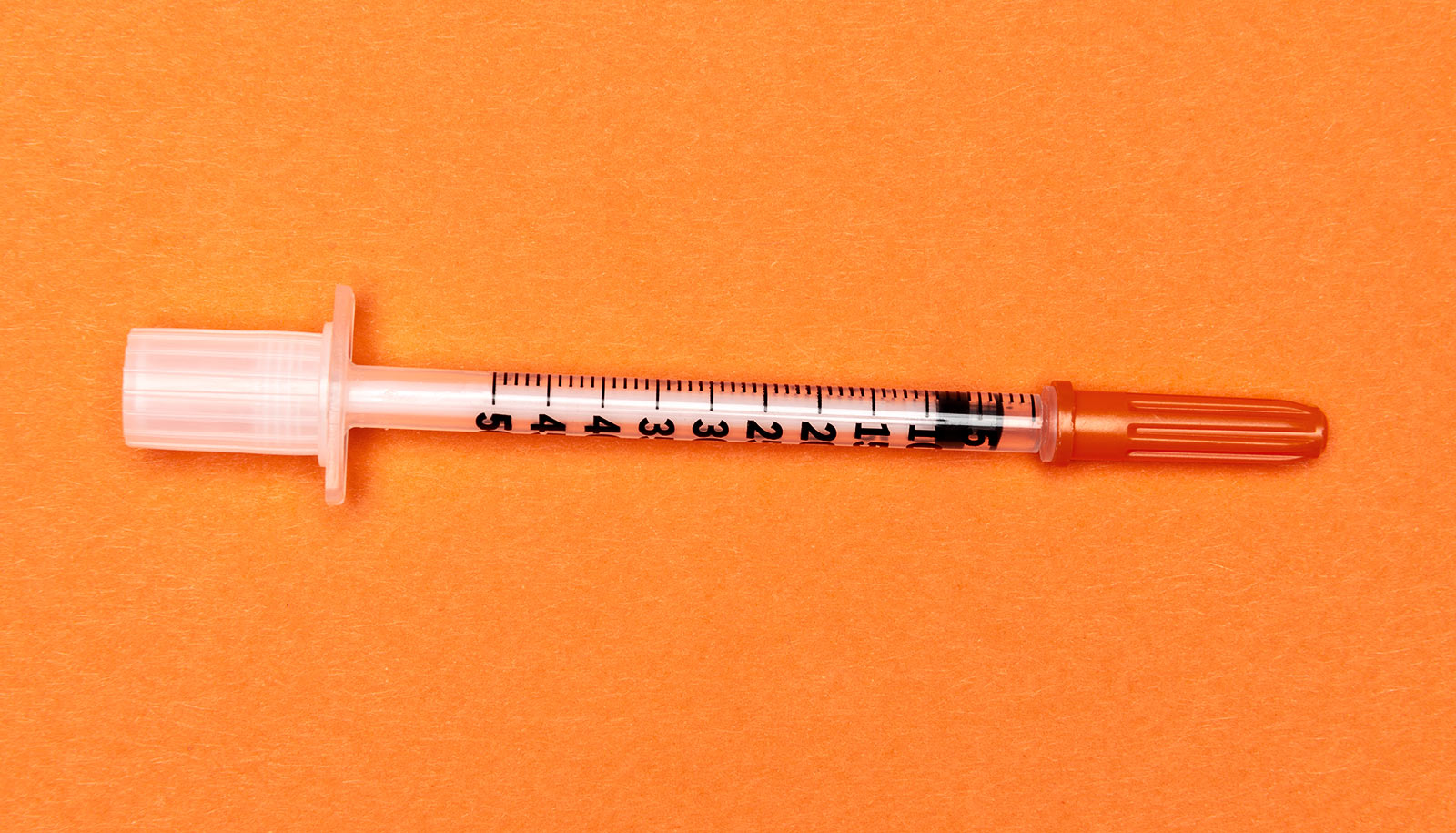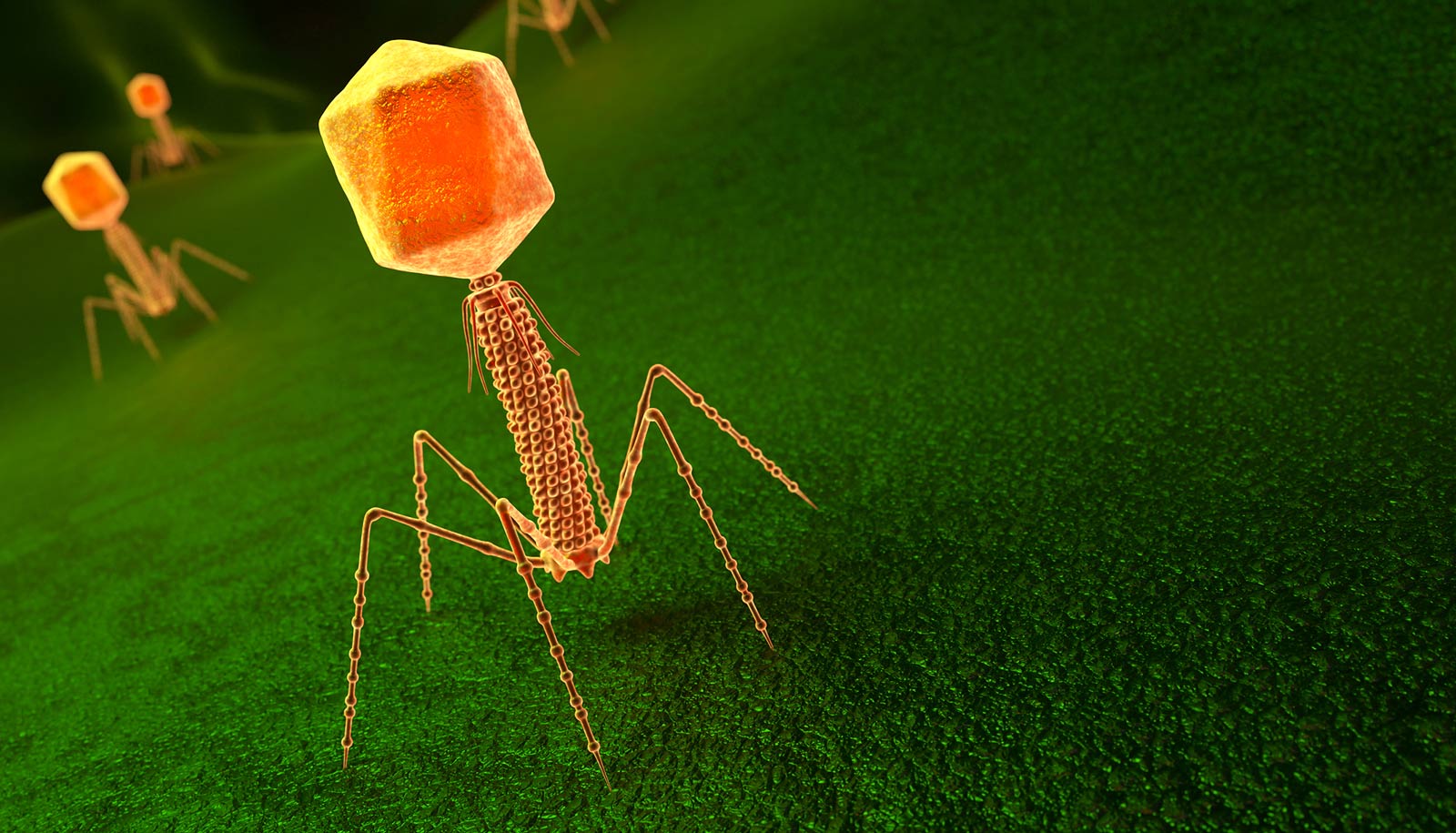A new method could boost the effectiveness of the insulin injections people with diabetes routinely take to control their blood sugar, research in pigs shows.
The advance might enable patients with diabetes to take a double-acting shot that contains insulin in combination with a drug based on a second hormone, known as amylin. Amylin plays a synergistic role with insulin to control blood sugar levels after eating in a more effective way than insulin alone and mimics what occurs naturally with a meal.
While the amylin-based drug is already commercially available, it is estimated that less than 1% of patients with diabetes taking insulin therapy also take this complementary treatment because the two hormones—which work together seamlessly in the body—are too unstable to coexist in the same syringe.
“Taking that second injection with the insulin shot is a real barrier for most patients. Our formulation would allow them to be given together in a single injection or in an insulin pump,” says Eric Appel, a materials scientist at Stanford University and senior author of the paper in Nature Biomedical Engineering.
Bringing insulin and amylin together
The new technique involves a protective coating that wraps around insulin and amylin molecules and, for the first time, allows them to coexist in a single shot.
“This coating dissolves in the bloodstream, enabling these two important hormones to work together in a way that mimics how they function in healthy individuals,” Appel says.
So far, the researchers have tested the wrapper’s stability in the laboratory, and done preliminary experiments to see how their two-in-one injection works on the most advanced preclinical model—diabetic pigs.
But, because both drugs are already on the market and the dual-drug formulation was tested in advanced models, Appel says the team need only demonstrate that their technique is nontoxic in humans to start trials in people, bringing the technology closer to market than most early-stage drugs.
Appel and his collaborators hope the approach could, one day, dramatically increase the use of amylin and lead to improved glucose management for the estimated 450 million people worldwide with either juvenile (type 1) diabetes or adult-onset (type 2) diabetes.
Although few patients with diabetes currently take the amylin-based drug after their insulin injection, those who do experience profound benefits, Appel says. Past clinical data shows that patients taking both lose weight and have better control over their blood sugar.
Enhanced diabetes management can reduce the risk of serious health complications, such as renal failure, blindness, heart disease, and amputations, all of which loom over anyone with diabetes.
Fewer blood sugar spikes
If the wrapper approach makes it possible to combine insulin and amylin in one dose, this would offer patients with diabetes a convenient way to mimic their natural secretion in the human body. In non-diabetics, amylin secretes from the same cells in the pancreas that produce insulin. Insulin improves cells’ uptake of sugar, removing it from the bloodstream.
For its part, amylin does three things to control blood sugar. First, it stops another hormone, glucagon, from telling the body to release additional sugar stored in the liver. Second, it produces a sense of “fullness” at mealtimes that reduces food intake. Third, it actually slows the body’s uptake of food, reducing the typical spike in blood sugar after a meal. Researchers call all three a boon to diabetes care.
To make it possible to pair insulin and amylin in one syringe, the researchers developed a molecular wrapper made of polyethylene glycol, or PEG, a common nontoxic chemical used in a variety of things such as cosmetics and laxatives.
The team used a new type of PEG that has a sort of molecular Velcro on the end, called cucurbituril-PEG or CB-PEG. The Velcro-like abilities of CB-PEG enable it to reversibly bind to both insulin and amylin separately, shielding the unstable portions of each molecule from breakdown. Once injected into the body, however, the drugs unbind from the CB-PEG and become free to act unhindered.
“CB-PEG is an entirely new chemical entity,” Appel says.
In lab tests of stability, the researchers heated wrapped and unwrapped insulin to normal body temperature and shook it, a process known as stressed aging. They found that unprotected insulin was stable for just 10 hours in the test tube, but the “PEGylated” insulin was still fully active 100 hours later. Without the wrap, the dual-drug combo fails in just 3 hours.
More impressive, however, is that the co-formulation of PEGylated insulin and amylin remained stable for at least 100 hours, a long enough shelf life to mean that insulin pumps could potentially deliver the combination.
In animal studies, the researchers saw significant overlap of the activity of the dual-drug formulation, an important finding that indicates the approach closely mimics what happens in a healthy body—including a near-total suppression of glucagon, the hormone that tells the liver to release stored sugar, even though the person has just consumed a meal.
“We’re excited about the results to say the least,” Appel says. Appel has filed for a patent on the technology.
Additional coauthors are from Notre Dame University and Stanford. The National Institutes of Health, the Stanford Diabetes Research Center, the Stanford Maternal and Child Health Research Institute, Stanford Bio-X, the PhRMA Foundation, the Novo Nordisk Foundation, the Danish Council of Independent Research, and the Stanford Animal Diagnostic Lab and Veterinary Service Center funded the work.
Source: Stanford University


